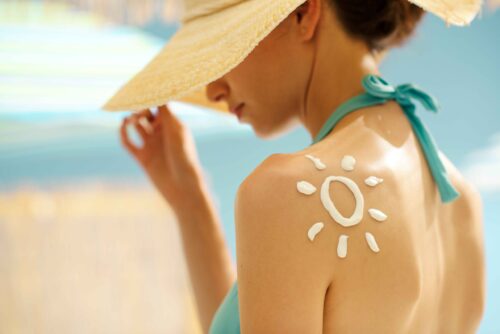Sun Protection Simplified: Your Guide to Safe Sun Practices
Published on April 1, 2024 by Westchester Center For Dermatology
At Westchester Center for Dermatology, your skin’s health is our priority. Protecting your skin from the sun is your simplest but greatest defense against skin aging and skin cancer. Studies show that wearing sunscreen reduces your risk of skin cancer by 40% and slows down signs of aging by 24%.
Sun damage prevention is better than treating severe skin problems. In this blog post, we will talk about the simple sun safety practices you can do to achieve or maintain healthier skin and promote skin cancer awareness.
Why Your Skin Needs Sun Protection
Sunlight emits ultraviolet (UV) rays that can harm the skin. While some sun exposure is beneficial for vitamin D synthesis, too much can damage skin cells. Damaged skin cells lead to premature aging, skin problems, and increased risk of skin cancer. Effective sun protection helps preserve skin health and appearance.
How Much Sun Exposure Is Too Much?
Moderation is key. Dermatologists recommend minimizing direct sun exposure, especially between 10 a.m. and 2 p.m., when UV rays are strongest. If outdoor activities are unavoidable during these hours, proper sun protection measures are important. Apply sunscreen every two hours to ensure that your skin remains protected while under the sun.
Understanding UVA and UVB Rays
Sunlight consists of two types of harmful rays that reach the earth: UVA and UVB. UVA rays penetrate deep into the skin, leading to aging and long-term damage. They are present throughout the day and can penetrate through clouds and glass. UVB rays, on the other hand, are responsible for sunburn and are strongest in the middle of the day. Both types contribute to the risk of skin cancer but knowing the difference helps you protect your skin from harmful UVA and UVB rays correctly.
Choosing and Applying Sunscreen Effectively
Selecting the right sunscreen is the most important step in sun protection. Look for products that are “broad-spectrum,” protecting against both UVA and UVB rays.
The Sun Protection Factor (SPF) indicates the level of UVB protection, however, no sunscreen can block 100% of the sun’s rays. SPF 30 blocks about 97%, and SPF 50 blocks about 98%. Apply sunscreen generously to all exposed skin, including areas often missed like the ears and neck.
Skin Problems Caused By Too Much Sun Exposure
Excessive sun exposure can lead to various skin issues, including:
- Sunburn: Red, painful skin that feels hot to the touch, peeling may occur.
- Photoaging: Premature aging of the skin, characterized by wrinkles, leathery texture, and loss of elasticity.
- Spider Veins: Small, dilated blood vessels visible on the skin’s surface.
- Loss of Skin Tone: Weakening of the skin’s support structure, leading to sagging and wrinkles.
- Fine Lines and Wrinkles: Early signs of aging exacerbated by UV exposure.
- Age Spots: Dark spots or patches resulting from sun damage, often appearing on the face, hands, and other exposed areas.
- Melasma: Brown or gray-brown patches, typically on the face, caused by sun exposure and hormonal changes.
- Skin Cancer: The most serious risk, with types including basal cell carcinoma, squamous cell carcinoma, and melanoma.
- Actinic Keratoses: Rough, scaly patches that may be precancerous, indicating significant sun damage.
How to Protect Your Skin From the Sun
Adopting a comprehensive approach to sun protection can significantly reduce the risk of skin damage:
- Limit Your Time in the Sun: Avoid sun exposure between 10 a.m. and 2 p.m., when UV rays are most intense.
- Use the Correct Sunscreen: Choose a broad-spectrum sunscreen with an SPF of at least 30, offering protection against UVA and UVB rays. Reapply every two hours, or after swimming or sweating.
- Wear Protective Clothing: A wide-brimmed hat, long-sleeved shirt, pants, or long skirt can shield your skin. Darker colors offer more protection.
- Wear Sunglasses with UVA and UVB Protection: Protect your eyes and the delicate skin around them from UV damage.
Seek Shade: Whenever possible, stay under cover, especially during the sun’s peak hours.
Contact Us to Learn More
For personalized advice on sun protection or to address any skin concerns you may have, contact Westchester Center for Dermatology today. Our team of board-certified dermatologists is dedicated to providing you with expert care and guidance on maintaining healthy, beautiful skin. Let us help you achieve a lifetime of healthy sun habits!



